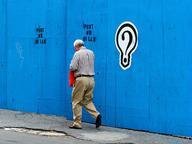Quiz Answer Key and Fun Facts
1. Who is regarded as the first European to establish a settlement in North America (excluding Greenland)?
2. The fortune cookie was invented in what country?
3. Which of the following man-made structures is easiest to see from the International Space Station?
4. What is the color of deoxygenated blood (the blood in your veins)?
5. In the film "Casablanca", the character Ilsa Lund famously tells Sam the pianist to play the song "As Time Goes By". How does she say it?
6. On what day in 1776 did the US Second Continental Congress vote to declare independence from Great Britain?
7. In what area of the body do dogs get rid of the most sweat?
8. Who is generally credited with being the inventor of the first automobile powered by an internal combustion engine?
9. What is the true tallest mountain in the world, from base to summit?
10. Who came up with the quotation: "I disapprove of what you say, but I will defend to death your right to say it?"
Source: Author
eyhung
This quiz was reviewed by FunTrivia editor
trident before going online.
Any errors found in FunTrivia content are routinely corrected through our feedback system.

